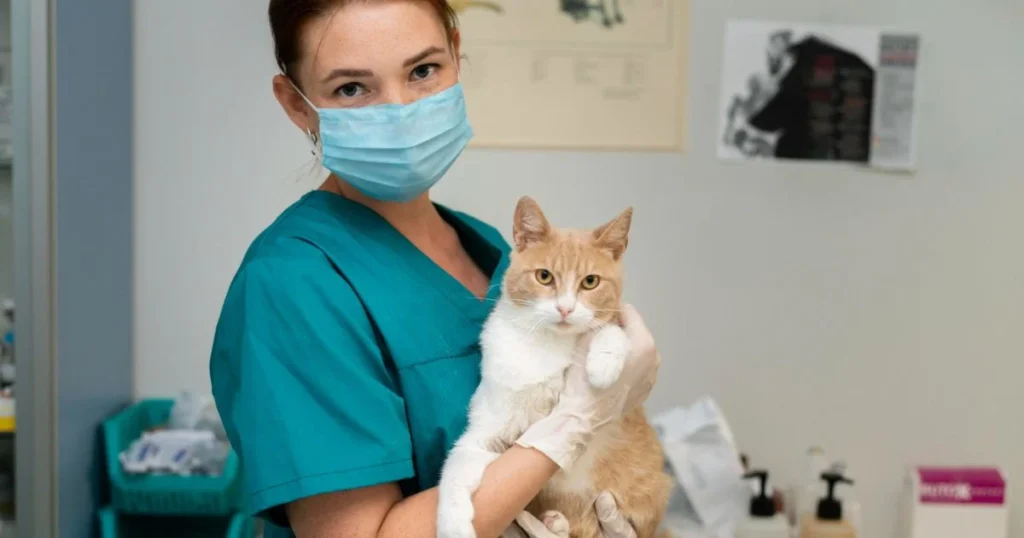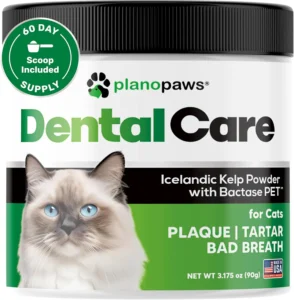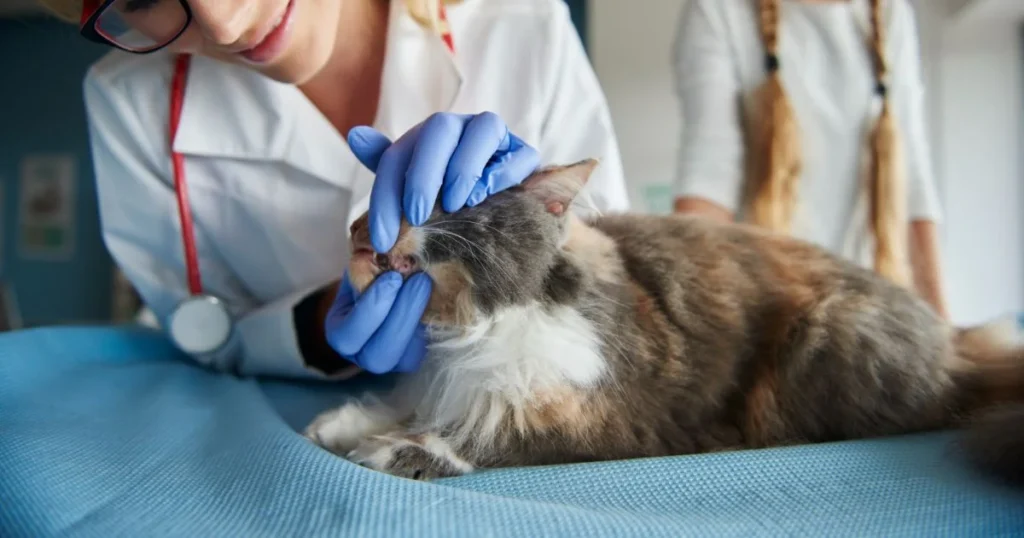Recognizing Cat Dental Disease Signs: A Guide for Pet Owners
Table of Contents
As a devoted cat parent, you want the best for your feline friend. But often, we overlook the importance of dental care. Dental disease affects up to 90% of cats over four, silently harming their quality of life.
Imagine your cat’s pain when gums are inflamed and teeth decay. Even simple tasks like chewing become hard. Learning to spot dental disease early can help protect your cat’s health.
In this guide, we’ll cover common signs of dental issues in cats. We’ll show you how to be a vigilant advocate for your pet’s health. We’ll discuss dental hygiene, the dangers of neglect, and how to keep your cat’s mouth healthy and happy.
Introduction to Cat Dental Health
Keeping your cat’s cat dental health and feline oral hygiene in check is key to their happiness. Dental disease is a big problem in cats, causing issues like gingivitis and tooth decay. Cats are good at hiding pain, making it hard to spot dental problems.
Importance of Maintaining Good Oral Hygiene
Good dental care is vital for cats. They can get plaque and tartar, leading to bad breath and gum disease. Spotting dental issues early can help treat them better and prevent worse problems.
Consequences of Neglecting Dental Care
Ignoring cat dental care can lead to big problems. Cats might have bad breath, drool a lot, or have trouble eating. They could even get infections that harm their organs. Untreated dental issues can also make your cat feel pain, leading to less activity and a messy look.
Regular vet visits, professional cleanings, and daily dental care at home are crucial. They help keep your cat’s optimal oral health and avoid the consequences of neglecting dental care.
“Dental disease is one of the most common health issues in cats, with conditions like gingivitis, periodontal disease, and tooth resorption being common problems.”
Common Signs of Dental Disease in Cats
As a responsible pet owner, knowing the signs of dental disease in cats is key. These issues can cause pain and lead to serious health problems if not treated. Look out for these signs of dental problems in cats:
Bad Breath
Persistent bad breath is a sign of dental disease in cats. It’s caused by bacteria and plaque in the mouth.
Tartar Buildup and Gum Inflammation
Cats with dental disease often have tartar buildup near their gums. This can cause gum inflammation and redness.
Difficulty Chewing or Eating
If your cat seems in pain while eating, it might have dental disease. Cats with dental problems may avoid food or have trouble chewing.
It’s vital to address these signs quickly. Up to 85% of cats over 3 years old have dental disease. Over 70% of cats over 5 have tooth resorption, a common cause of tooth loss. Taking your cat to the vet and starting a dental care routine can prevent more problems and keep your cat healthy.
| Dental Disease Statistic | Percentage |
|---|---|
| Cats ages 3 years and older with dental disease | Up to 85% |
| Cats over 5 years old with signs of tooth resorption | More than 70% |
| Cats with dental disease that can have it significantly decreased or resolved with proper treatment | Up to 60% |
| Cats with dental disease that continue to struggle with varying degrees of oral inflammation | 40% |
Cat dental disease signs
As a pet owner, knowing the signs of dental disease in cats is key. These signs help you spot problems early and get your cat the care they need. Here are some important signs to look out for.
Bad Breath
Bad breath, or halitosis, is a clear sign of dental disease in cats. It happens when bacteria, plaque, or tartar build up in their mouth.
Tartar Buildup and Gum Inflammation
Plaque turns into hard tartar, causing gum inflammation, or gingivitis. You’ll see this as red, swollen gums around the teeth.
Difficulty Chewing or Eating
If your cat struggles to chew or seems reluctant to eat, they might be in pain. This could mean they have dental disease, like tooth resorption or an abscess.
“Approximately 70% of cats develop some form of periodontal disease by the age of 3.”
It’s vital to address these signs quickly for your cat’s health. Regular dental checks and good oral care can prevent and manage dental problems in cats.
Behavioral Changes Indicating Oral Pain
As pet owners, we must watch our cats closely. Their behavior can tell us a lot about their health. Dental issues can cause subtle changes in their behavior, showing they might be in pain.
Pawing at the Mouth
One clear sign of dental pain in cats is when they paw or rub their mouth a lot. If your cat is doing this often, it might mean they’re uncomfortable or in pain.
Loss of Appetite or Weight Loss
Dental problems can affect how much your cat wants to eat. Cats in pain might not want to chew or swallow, leading to less appetite or weight loss. If your cat’s eating habits change or they lose weight, it’s time to check their teeth and gums with a vet.
By paying attention to these changes, we can catch dental issues early. This helps our cats get the care they need to stay healthy and happy.
“Persistent foul-smelling breath is often one of the first signs of dental disease in pets.”
Visual Signs of Advanced Dental Issues
Dental disease in cats can lead to serious problems. These include tooth loss, infections, and even oral tumors. If you notice these signs, get your cat to the vet right away.
Discolored or Loose Teeth
Discolored or loose teeth are clear signs of dental trouble. Yellow or brown teeth might mean tartar or decay. Loose teeth could be a sign of periodontal disease or tooth resorption.
Swelling or Lumps in the Mouth
Swelling or lumps in a cat’s mouth are serious. They could be due to gum inflammation, abscesses, or tumors. Cats often hide pain, so any mouth changes are important to notice.
| Visual Sign | Potential Underlying Condition |
|---|---|
| Discolored Teeth | Tartar buildup, tooth decay |
| Loose Teeth | Periodontal disease, tooth resorption |
| Swelling or Lumps in the Mouth | Gum inflammation, abscesses, oral tumors |
Watching your cat’s mouth health is key. Look out for these signs of dental problems. Quick vet visits can stop things from getting worse and keep your cat healthy.
Potential Health Complications
Untreated cat dental disease can cause serious health problems. These include periodontal disease and tooth loss. Periodontal disease can harm the tissues around the teeth, leading to abscesses and bone damage.
It can also cause systemic infections that spread to other organs. This chronic condition can make your cat very uncomfortable. It can also lead to malnutrition and weight loss.
Periodontal Disease and Tooth Loss
Periodontal disease gets worse over time. It can destroy the structures that hold your cat’s teeth in place. This includes the gums, bones, and ligaments.
As it progresses, it can cause tooth loss. This is painful and makes eating hard for your cat.
Risk of Systemic Infections
Dental disease in cats can raise the risk of systemic infections. Bacteria from the mouth can get into the bloodstream. Then, they can spread to organs like the liver, heart, and kidneys.

“Prompt treatment is key to preventing discomfort, mitigating the risk of worsening dental health, and maintaining the overall health and quality of life of cats.”
Regular dental check-ups, cleanings, and at-home dental care are crucial. They help keep your cat’s teeth healthy. This prevents serious complications.
Preventive Measures for Optimal Oral Health
To keep your cat’s mouth healthy, you need to act early. Regular vet visits and a good at-home dental care routine are key. These steps help keep your cat’s teeth and gums in top shape.
Regular Dental Check-ups and Cleanings
It’s important to take your cat to the vet for dental checks. Cats often face dental problems, with over 50% of them over 4 years old getting dental disease. At these visits, your vet can check for issues, clean teeth, and remove plaque and tartar.
At-Home Dental Hygiene Routine
- Brush your cat’s teeth with pet-safe toothpaste to fight plaque and tartar. This helps prevent gum disease and other dental issues.
- Give dental treats and chews that help remove plaque and have ingredients that stop bacteria growth.
- Use dental wipes or water additives to keep your cat’s mouth clean between brushings and vet visits.
By adding these steps to your cat’s care, you can keep their teeth and gums healthy. This helps avoid serious dental problems later on.
| Preventive Measure | Benefits |
|---|---|
| Regular Dental Check-ups and Cleanings | Identify and address dental problems early, remove built-up plaque and tartar |
| At-Home Dental Hygiene Routine | Reduce plaque and tartar accumulation, inhibit bacterial growth, maintain oral health |
“Periodic veterinary checkups every 6-12 months can help diagnose cat gum disease before it becomes severe.” – Dr. Michelle Vitulli, DVM, Caring Hands Animal Hospital
By taking these steps for your cat’s oral health, you can keep their teeth and gums healthy. This helps avoid serious dental issues.
Dental-Friendly Diets and Treats
Keeping your cat’s teeth clean is more than just brushing. A balanced diet helps prevent plaque and tartar. Dental cat foods and treats clean teeth and gums, keeping your pet healthy.
Ask your vet about the best dental diet for your cat. Look for products with the Veterinary Oral Health Council (VOHC) seal. This means they’ve been tested and work well against plaque and tartar.
Recommended diets include Hill’s Prescription Diet t/d and Science Diet Oral Care. These foods have special kibble that cleans teeth as your cat eats. Dental chews and treats are also good for cats who don’t like tooth brushing.
“Between 50 and 90 percent of cats over four years of age suffer from some form of dental disease.”
Adding dental-friendly foods and treats to your cat’s diet helps keep their mouth healthy. Regular vet visits are also key to catching and treating any dental problems early.

Your cat’s dental health is vital for their happiness and well-being. Talk to your vet about the best cat dental-friendly diets and cat dental treats for your pet.
When to Seek Veterinary Attention
As a responsible pet owner, keeping an eye on your cat’s dental health is key. Look out for signs like bad breath, trouble chewing, or mouth changes. These could mean your cat has advanced dental disease and needs vet care fast.
Signs of Advanced Dental Disease
Watch for teeth that are discolored or loose, mouth swelling, or too much drooling. These signs point to serious dental problems in cats. If ignored, they can cause a lot of pain and harm your cat’s health.
Need for Surgical Intervention
Severe dental issues might need surgery, like for periodontal disease or tooth resorption. This surgery is crucial to fix your cat’s mouth and stop infections. Your vet will check the problem and tell you what to do next.
Regular dental checks and cleanings, plus home care, can stop dental disease in cats. Taking care of your cat’s teeth helps keep them happy and healthy.
“Dental problems in cats can have serious consequences if left untreated. It’s important to watch for signs of dental disease and seek veterinary attention promptly.”
Conclusion
Keeping your cat’s teeth clean is key to their health. Knowing how to care for their teeth and spotting dental problems early is important. This helps your cat stay happy and healthy.
Regular vet visits, professional cleanings, and home care can prevent dental issues. Using dental charts for cats helps spot problems early. This leads to better treatment results.
Looking after your cat’s teeth is a big step towards a long, happy life. Being quick to notice dental disease helps avoid pain and health issues. With the right care, your cat’s teeth will stay healthy for many years.
FAQ
What are the common signs of dental disease in cats?
Signs of dental disease in cats include bad breath and tartar buildup. You might also see red or bleeding gums. Difficulty chewing or eating is another sign.
How can behavioral changes indicate oral pain in cats?
Cats in pain may paw at their mouth or face. They might also have trouble chewing and swallowing. This can lead to a decrease in appetite or weight loss.
What are the visual signs of advanced dental issues in cats?
Advanced dental disease shows up as discolored or loose teeth. You might also see swelling or lumps in the mouth. These signs need immediate vet care.
What are the potential health complications of untreated dental disease in cats?
Untreated dental disease can cause serious problems. It can lead to periodontal disease, affecting the teeth and surrounding tissues. This can result in abscesses, tooth loss, and bone damage. It can also spread to other organs.
How can you maintain your cat’s optimal oral health?
To keep your cat’s mouth healthy, schedule regular dental check-ups. Perform professional cleanings and examinations. Also, brush their teeth regularly with pet-friendly toothpaste.
When should you seek veterinary attention for your cat’s dental issues?
If your cat shows signs of dental disease, like bad breath or trouble chewing, see a vet quickly. Advanced issues might need surgery to fix your cat’s mouth and prevent more problems.

Cat Dental Care Powder – Easier Than Cat Toothpaste – Cat Dental Treat Alternative to Get Plaque Off – Cat Teeth Cleaning Powder with Bactase PET – Cat Breath Freshener for Cat Bad Breath – Oral Care

